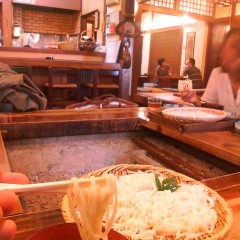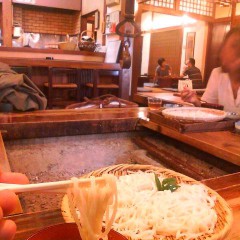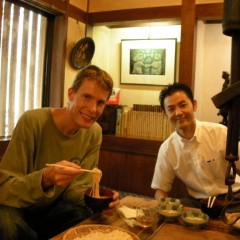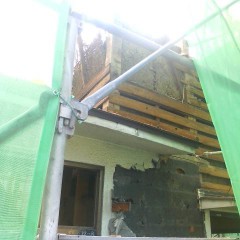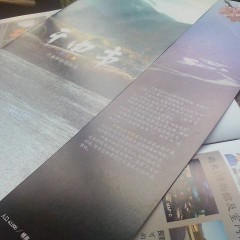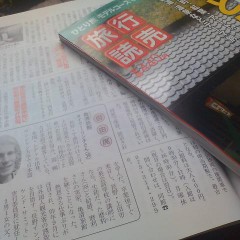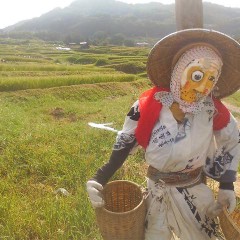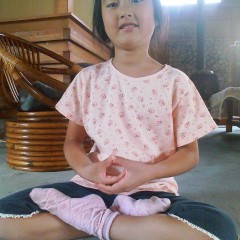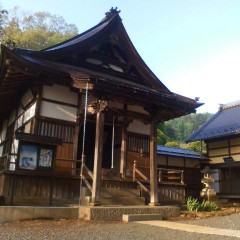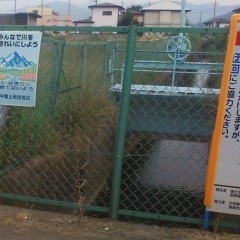県外また遠くから知り合いが来れば、食事は連れて行く時はやはり、地元の特徴な料理を食べさせたいですね。信州全体はおそばが有名ですが、この戸倉上山田温泉の「ここだけ」の味はおしぼりうどんです。最近は人気があって、上田市や長野市でやりだしている店もあるけれど、元々はこの近辺からです。と言うのは、この近辺でしか取れないねずみ大根と言う辛み大根を使うからです。「この辺で土が良いからこういう特別な大根が出来るか」とよく聞かれますが、実は土が荒いです。荒いからこそ、大根が伸びれなくて、辛みが集中する訳です。
その辛いねずみ大根をすり下ろして、搾る;その汁に甘い信州味噌を混ぜて(そうしないと辛くて食べれない!)、そこにうどんをつけて食べる。これがおしぼりうどんです。
本来なら、夜にいっぱい飲んでから食べると一番美味しいらしいです。おなかにやさしいからですね。しかし、健康食とも言われていますのでこのごろは普通になお昼にも夕食にも出している店が増えています。
戸倉上山田温泉の中で、おしぼりうどんを出してお店は数件があります。1つは今年に出来たZagat長野に載っています:古波久。上山田温泉の繁華街の細い道に隠れています。お店の中は囲炉裏などがあって、古い民家のまた良い雰囲気です。長年の経験を生かして、一番辛い大根を取れているのが自慢だそうです。
戸倉上山田温泉にいらっしゃり際、古波久へどうぞ。
明細はこちら
Whenever friends come from out of the Prefecture or from far away, we want to treat them to a meal that they can't get anywhere else. Nagano Prefecture as a whole is known for buckwheat soba noodles, but Togura Kamiyamada Onsen has its own specialty: a spicy udon dish called Oshibori Udon.
Lately, Oshibori Udon has been gaining in popularity so restaurants in Ueda and Nagano City and other surrounding areas are starting to offer it. But it originated from here, because this area is the only place where you can grow properly spicy "nezumi" daikon radish. It's a stubby white radish with a little tail that makes it look like a "nezumi" (mouse). People often ask if the soil around here is so good as to make this special daikon. However, it's actually because the soil here is so poor that we get such spicy radishes -- the radish's growth is constricted so the spiciness gets extra concentrated!
To make Oshibori Udon, you grate the nezumi radish and press out ("shibori") the juice, then mix in sweet Shinshu Miso (if not, it becomes too spicy to eat); finally you dip the udon in it and eat. This is Oshibori Udon. Typically it's known as a midnight snack after a night of drinking, because it is gentle on the stomach. But it's a very healthy food, and is gaining in popularity for lunch and regular dinner, too.
Here in Togura Kamiyamada Onsen, there are several restaurants that specialize in Oshibori Udon. One of those has been listed in the Zagat Nagano Guide: Kohaku. Kohaku is hidden in the middle of the narrow, windy streets of Kamiyamada Onsen's bar district. The interior features tables with irori hearths and other antiques, giving it a feel of a traditional old farmer's house. The people running Kohaku have been working with nezumi daikon for long enough that they know where to get the spiciest ones.
So if you come to Togura Kamiyamada, after your soak in the onsen, try out the spicy udon at Kohaku!
Kohaku
1-44-4 Kamiyamada Onsen, Chikuma City
Tel(026)276-2787
Open from 18:00~23:30(L.O.) on Mondays thru Saturdays,
and 1:00~22:30(L.O.) on Sundays.
Closed the 1st and 3rd Wednesdays.
Also open for lunch from May to October, 11:30~13:30 (L.O.)
Zagat Nagano Guide Website HPはこちら
